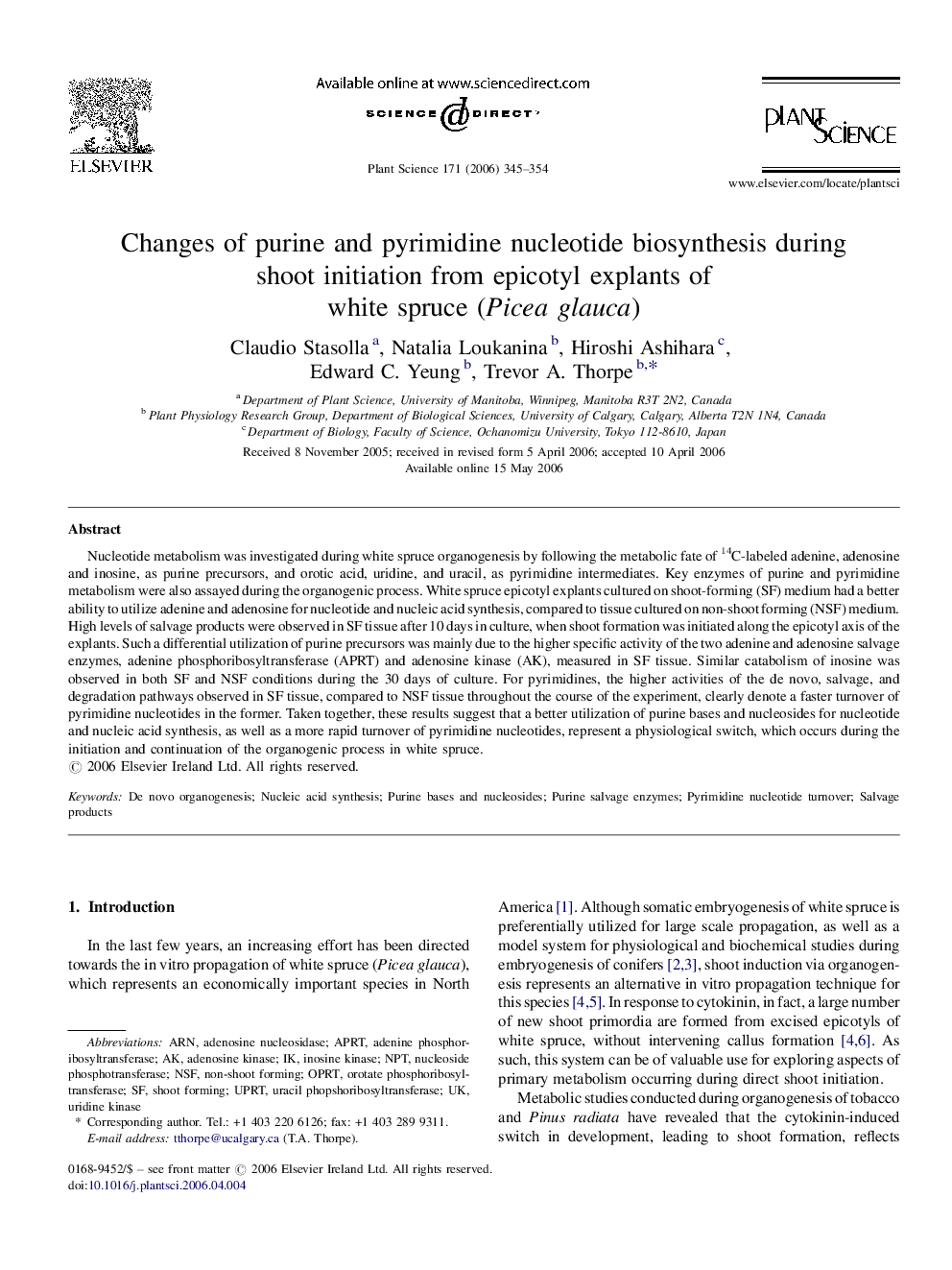| Article ID | Journal | Published Year | Pages | File Type |
|---|---|---|---|---|
| 2018603 | Plant Science | 2006 | 10 Pages |
Nucleotide metabolism was investigated during white spruce organogenesis by following the metabolic fate of 14C-labeled adenine, adenosine and inosine, as purine precursors, and orotic acid, uridine, and uracil, as pyrimidine intermediates. Key enzymes of purine and pyrimidine metabolism were also assayed during the organogenic process. White spruce epicotyl explants cultured on shoot-forming (SF) medium had a better ability to utilize adenine and adenosine for nucleotide and nucleic acid synthesis, compared to tissue cultured on non-shoot forming (NSF) medium. High levels of salvage products were observed in SF tissue after 10 days in culture, when shoot formation was initiated along the epicotyl axis of the explants. Such a differential utilization of purine precursors was mainly due to the higher specific activity of the two adenine and adenosine salvage enzymes, adenine phosphoribosyltransferase (APRT) and adenosine kinase (AK), measured in SF tissue. Similar catabolism of inosine was observed in both SF and NSF conditions during the 30 days of culture. For pyrimidines, the higher activities of the de novo, salvage, and degradation pathways observed in SF tissue, compared to NSF tissue throughout the course of the experiment, clearly denote a faster turnover of pyrimidine nucleotides in the former. Taken together, these results suggest that a better utilization of purine bases and nucleosides for nucleotide and nucleic acid synthesis, as well as a more rapid turnover of pyrimidine nucleotides, represent a physiological switch, which occurs during the initiation and continuation of the organogenic process in white spruce.
